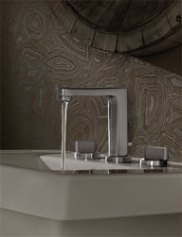During the fall season, before the weather grows colder it’s important to prepare for the winter months to prevent costly damage later on. Below are fall preventative home maintenance steps that every homeowner should follow.
Gutters and Downspouts: Clean gutters and downspouts frequently throughout fall to prevent build up of leaves and other debris. Neglected gutters can lead to wood rot problems, pest infestations, wet basements, foundation damage and many other expensive complications. Be sure water is not coming down behind gutters and that all support brackets are securely in place. Check to ensure water drains properly and doesn’t pool, which can cause damage to foundations, driveways, and walkways.
Windows and Doors: Change summer screens to cool weather storm windows and doors. Inspect and repair any loose or damaged window or door frames. Install weather stripping or caulking around windows and doors to prevent drafts and lower heating bills. Clean and lubricate garage door hinges, rollers, and tracks and be sure screws are tight.
Heating Systems: Replace the filter in your furnace. Consider having a heating professional check your heating system to ensure optimal performance and discover minor problems before they turn into costly major repairs. Clean your ducts to better your heating system’s efficiency as well as to reduce household dust and to provide relief to those with respiratory problems. Also check for air leakage especially around joints. Clean your thermostat’s heat sensor, contact points, and contacts. Check accuracy and replace if necessary.
Plumbing: To prevent pipes freezing and bursting, ensure that the pipes, as well as the wall cavities where they reside, are well insulated. Be sure that you know how to locate and turn off the water shut-off valve in case pipes do freeze.
Chimney and Fireplace: Call a professional in to inspect and clean your chimney. Fireplaces that are regularly used during the season should have an annual cleaning to prevent dangerous chimney fires. Test your fireplace flue for a tight seal when closed. Consider installing a carbon monoxide alarm near the fireplace and furnace.
Attic ventilation: Be sure attic insulation doesn’t cover ventilation vents in the eaves to prevent winter ice dams on the roof. Be sure ridge vents and vents at eaves are free of plants and debris. Check bird and rodent screens for attic vents to prevent any unwanted guests.
Landscape and Yard Work: Although grass appears to stop growing in the fall, the roots are actually growing deeper to prepare for winter. Now is the best time to fertilize and reseed your lawn. Prune your trees and shrubs after the leaves turn to encourage healthy growth in the spring. Trim any tree limbs that are dangerously close to power lines or the roof of your house. Heavy snow and ice can cause damage in the winter. Ceiling fans: A common misconception about overhead fans is that they’re just for summer. The truth is ceiling fans are helpful no matter what the season. In summer they will cool you down and in winter they increase the airflow and improve your heating.
Equipment: If you have portable patio furniture, lightweight play equipment, or a barbecue grill, store it inside. The exception to this is a propane tank, which should never be put indoors. Garden hoses should be drained of water and stored indoors. Make sure your outside water spigots are completely turned off and capped to prevent freezing.
Thermostat: The number one thing that affects a person’s bill is the heat they use in their house. Heating accounts for approximately 70% of a person’s energy bill. The simple act of turning down your thermostat at night or while you are gone during the day will go a long way to reducing your energy bills. It is recommended keeping your thermostat at 68-72 degrees for heating purposes and dropping it lower at night. By turning your thermostat down at night, you reap the savings of a lower winter utility bill. If you have trouble remembering to turn the temperature down, consider installing a programmable thermostat to do the work for you.
Clean and vacuum dust from vents, baseboard heaters and cold-air returns: Dust build-up in ducts is a major cause of indoor pollutants and can increase incidences of cold-weather illnesses. Consider hiring a pro to clean hard-to-reach ductwork.
-
Recent Posts
Archives
Categories
Meta

